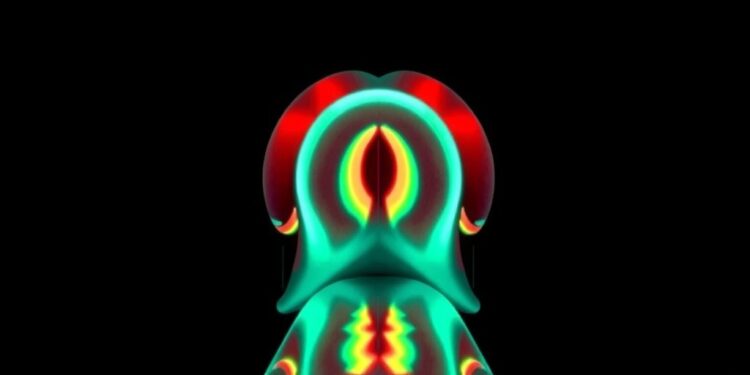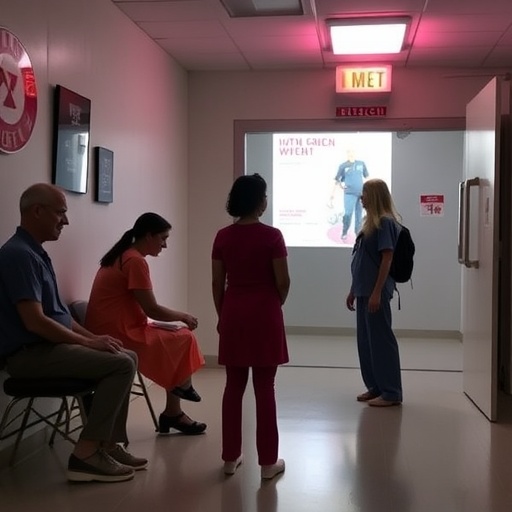In the realm of oncological diagnostics, the integration of Positron Emission Tomography/Computed Tomography (PET/CT) heralds a significant progression in how physicians evaluate metabolic and anatomical data. This innovative imaging modality not only enhances diagnostic precision but also plays a pivotal role in the detection and characterization of tumors. However, the reliability of the standardized uptake value (SUV)—a critical parameter in assessing tumor metabolism—is often compromised, particularly in the presence of the partial volume effect (PVE). This phenomenon tends to obscure the true metabolic activity of small lesions, thereby hindering accurate diagnosis.
To address these challenges, a groundbreaking study was conducted to develop a method that refines the correction for PVE, particularly in the context of small lesions. The research spearheaded by Yavuz et al. employed a specially designed anthropomorphic body phantom that reflects human anatomy more accurately. This customized phantom featured various sizes of embedded spherical lesions, simulating real-life tumor conditions that might be encountered in clinical practice and allowing for more precise measurements of recovery coefficients (RCs).
This study was implemented across four different hospitals utilizing various PET/CT systems produced by major manufacturers like Siemens, Philips, and GE. This multi-center approach is crucial, as it provides a robust comparison across different technologies and enhances the generalizability of the findings. The anthropomorphic phantom was ingeniously designed to include six custom-engineered cylinders, each holding spheres of different dimensions—some below the 1 cm threshold, which is often where PVE has the most substantial impact on SUV measurements.
The experimental method involved conducting separate scans for each sphere located in the thorax, abdomen, and pelvis regions. This meticulous approach aimed to holistically assess how sphere size and anatomical region influenced the collected data. In analyzing the results, recovery coefficients were calculated to correct the SUV values, shedding light on the variations in RCs with respect to both the size of the spheres and their anatomical context.
Findings revealed that the recovery coefficients exhibited a strong tendency to approach unity for larger spheres. This is critical, as RCs nearing unity indicate that SUV values are accurate, reflecting the true metabolic activity of the lesions. Conversely, the challenges multiply for smaller spheres measuring less than 0.5 cm. In these cases, the effects of PVE become pronounced, significantly distorting SUV readings and posing a challenge for clinicians striving for precise tumor characterization.
The significance of this study extends beyond mere academic curiosity; it emphasizes the necessity for advanced imaging technologies that can better accommodate the complexities of small lesion detection. The anthropomorphic phantom developed and utilized in this research serves as a vital tool in achieving more accurate SUV-corrected values, fostering improvements in PET imaging’s standardization.
Moreover, the implications of this research highlight the need for hospitals and imaging centers to adopt standardized recovery coefficients in their clinical workflows. By doing so, the medical community can enhance the reliability of PET imaging specifically in the oncological setting, leading to improved patient outcomes and more informed treatment strategies.
This innovative contribution to the field of biomedical engineering outlines not only the technical challenges posed by PVE but also provides a pathway to overcoming these hurdles. By emphasizing the critical role of anthropomorphic phantoms in PET/CT imaging, this research paves the way for a new era of enhanced accuracy in oncological diagnostics.
In summary, this groundbreaking study presents a pioneering approach to addressing the partial volume effect through the use of an anthropomorphic body phantom, showcasing how tailored solutions can effectively meet existing challenges in medical imaging. As research continues to evolve in this domain, the anticipation for further breakthroughs grows, promising a future where precision medicine in oncology could become the standard rather than the exception.
In conclusion, the work led by Yavuz and colleagues serves as a clarion call to the scientific and medical community alike, urging ongoing innovation and standardization in imaging technologies. As PET/CT remains a cornerstone in cancer diagnostics, improving the tools available for accurate metabolic assessment will undeniably play a crucial role in enhancing patient care and treatment efficacy.
—
Subject of Research: Partial volume effect correction in PET/CT imaging
Article Title: Calculation of recovery coefficients for partial volume effect correction in PET/CT imaging using a customized anthropomorphic body phantom
Article References:
Yavuz, G., Kovan, B., Toklu, T. et al. Calculation of recovery coefficients for partial volume effect correction in PET/CT imaging using a customized anthropomorphic body phantom.
BioMed Eng OnLine 24, 20 (2025). https://doi.org/10.1186/s12938-025-01330-7
Image Credits: Scienmag.com
DOI: https://doi.org/10.1186/s12938-025-01330-7
Keywords: PET/CT imaging, partial volume effect, recovery coefficients, anthropomorphic phantom, oncology diagnostics, metabolic imaging.
Tags: anthropomorphic body phantom utilizationimaging precision in oncologymetabolic activity assessmentmulti-center PET/CT studyoncological diagnostic advancementspartial volume effect in imagingPET/CT imaging optimizationrecovery coefficient analysisSiemens Philips GE imaging systemssmall lesion detection techniquesstandardized uptake value challengestumor characterization methods





